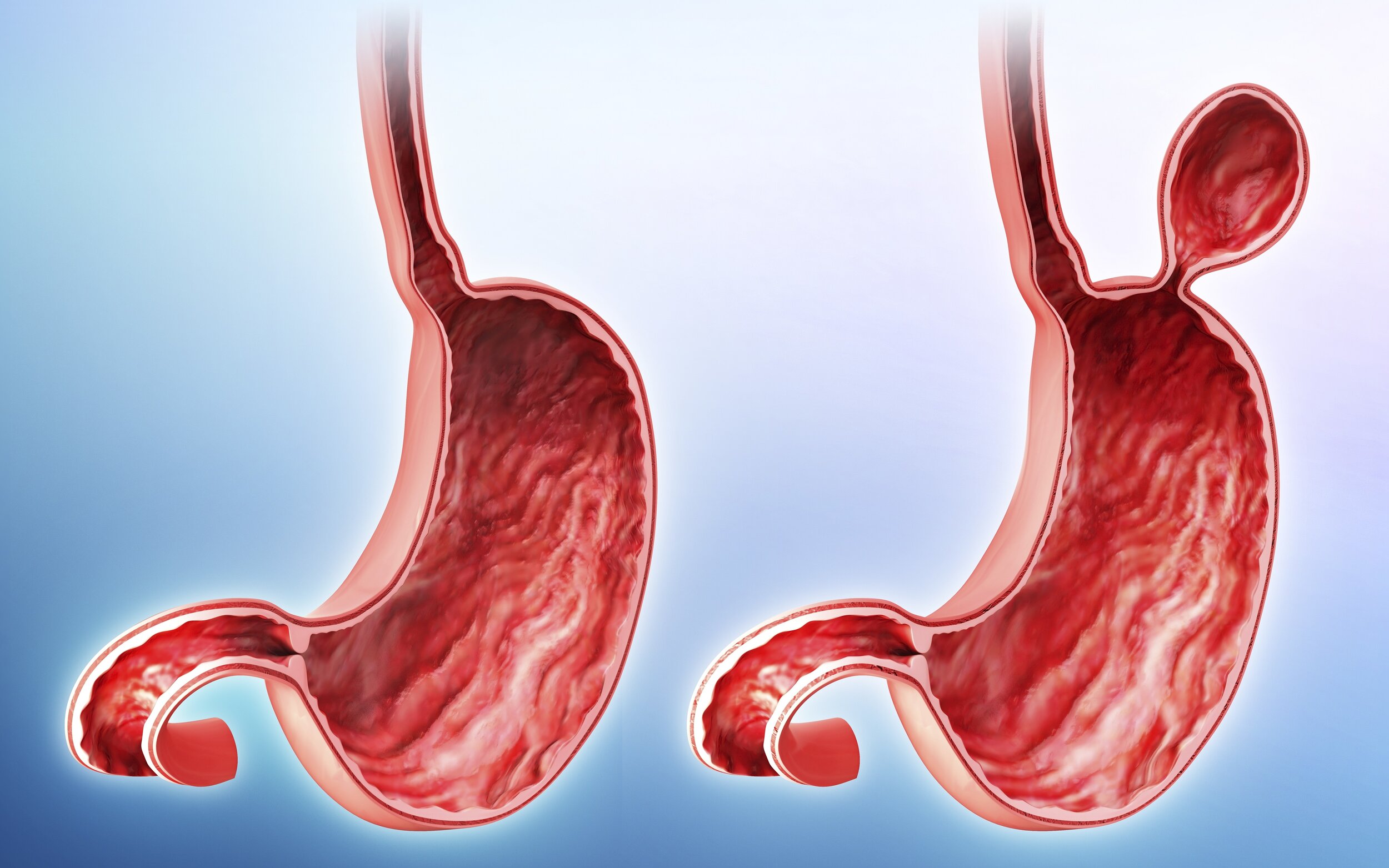What Is A Hiatal Hernia?
A hiatal hernia is a type of hernia that happens when part of the upper stomach squeezes through the hiatus - an opening in the diaphragm that the esophagus passes through. Hiatal hernias are typically caused by a combination of pressure and a weakness of muscle or fascia, resulting in part of the stomach ending up located in an area it shouldn’t be. There are two different types of hiatal hernias: sliding and paraesophageal. A sliding hernia occurs when the stomach and the part of the esophagus that joins the stomach slide up into the chest through the hiatus. In a paraesophageal hernia, the esophagus and stomach both stay in their normal place, but a small section of the stomach squeezes through the hiatus and ends up next to the esophagus. Paraesophageal hernias are the less common of the two, and in many cases are more dangerous.
Hiatal hernias are common in patients who have Gastroesophageal Reflux Disease, with up to 90% of GERD patients having one. Hernias are oftentimes discovered when patients come in complaining of GERD symptoms, or when the hernia causes pain in their upper abdomen similar to the pain caused by a groin hernia.
Hiatal Hernia Symptoms & Diagnosis
Symptoms Of Hiatal Hernia
Many smaller hernias (less than 2.5 inches in size) cause no symptoms, so it's not uncommon for a hiatal hernia patient to not know they have one. Very large hernias, on the other hand, can cause upper abdominal or chest pain, and may require surgical repair to prevent strangulation of the stomach.
Hiatal Hernia Diagnosis
Since hiatal hernias oftentimes don’t produce any symptoms, it’s not uncommon for many to go completely undiagnosed. In fact, many patients go years without realizing they even had a hernia! The two most common procedures used to diagnose hiatal hernias are x-rays and an Upper Endoscopy.

Because in many cases there are no symptoms caused by hiatal hernias, they are often left untreated if they occur in conjunction with no other conditions. In severe paraesophageal hernia cases the stomach can become strangled. In cases like these, surgery may be necessary to reduce the hernia. This surgery usually consist of three parts:
Step 1: Freeing up the attachments that are keeping the stomach up in the chest in order to get the stomach back down into the abdomen.
Step 2: Repairing the opening in the diaphragm with sutures and an onlay patch to reinforce the sutured closure.
Step 3: Folding the stomach around the lower esophagus to create a bumped, which prevents the stomach from riding back up into the chest again.
In cases where hiatal hernias are coupled with GERD, treatment for the hernia typically consists of treating the patient’s GERD and attempting to minimize their reflux. There are many different treatment options for GERD, from simple changes in lifestyle and diet to medication or, in more severe cases, anti-reflux surgery.
Suspect that you may have a hiatal hernia? Schedule a consult with our doctors and take the next step towards diagnosis and treatment.


